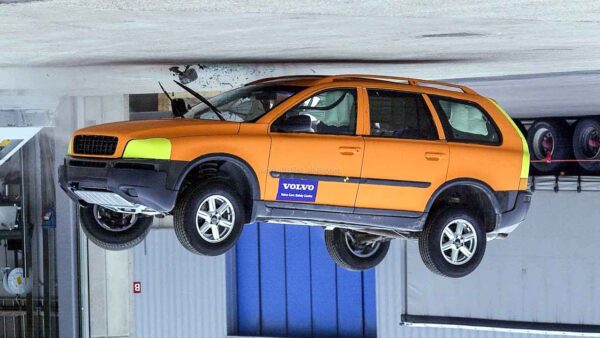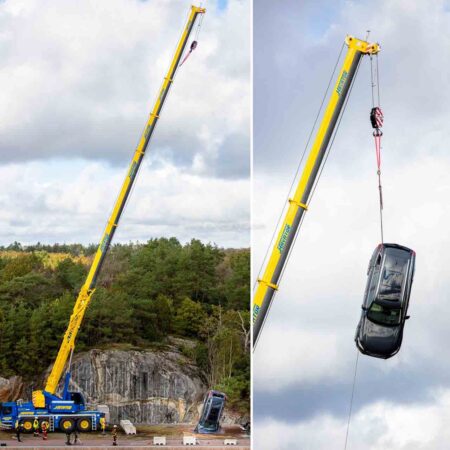
Volvo’s Safety Centre is one of the most advanced car safety crash test lab in the world
Entire automotive world is witness to how seriously Volvo takes its passenger safety. Earlier, this year the Swedish carmaker announced that it has limited top speeds on its cars worldwide to 180 kmph. Even though it meant it would be losing a fair share of speed-loving enthusiasts, Volvo remains committed to passenger’s safety in every way.
Volvo’s love affair with safety is not new. They were the first to give the automotive world safety airbags and did not even patent it so that all manufacturers could implement it in their cars. It is also one of the first car companies to have a dedicated safety centre which has been conducting its own crash tests every day since the past twenty years.
Inaugurated in the year 2000 by King of Sweden himself, Carl XVI Gustaf, this safety centre is based out of Torslanda near Gothenburg. It is a multifunctional facility that allows engineers to recreate every imaginable safety hazard and test cars far beyond regulatory requirements. Through thousands of computer simulations, Volvo has been conducting a crash test for a new car every day on average for the past twenty years.
Facilities at Volvo’s Safety Centre
Although it sounds very drastic, it has helped the Swedish company maintain its position as a leader in automotive safety. The facility comprises two test tracks of 108m and 154m respectively. The shorter one is movable and can be placed at an angle between zero and 90 degrees which allows crash tests to be conducted at different angles and speeds or to simulate a crash between two moving cars. These cars can clock a top speed of 120 kmph in these tests.

There is enough room to conduct roll-over crashes and run-off road scenarios where cars are launched into a ditch at high speeds. Additionally, Volvo has also got a mobile team tracking real-life collisions and also a crane which is capable of dropping pre-production cars from a height of 30 metres to emulate effects of an extreme crash.
Inside the building, there is a massive 850-tonne movable crash barrier which is used for evaluating various frontal, rear, and side impacts. It can be moved around if needed with the help of air cushions. In addition, there are a couple of dozens other fixed and movable barriers which are used for crash tests including a moose-like structure to simulate crashes involving these animals.
Crash Testing 450 Cars Every Year
Volvo says, “The requirements specified by various public agencies and bodies such as EuroNCAP and IIHS represent only part of the centre’s work; Volvo Cars performs additional crash tests to ensure that the collision performance of its cars is the best possible. In the course of development, a new Volvo model undergoes no less than 100 to 120 crash tests. In total, about 450 crash tests are carried out annually.”
Magnus Krokstrom, senior manager at the Volvo Cars Safety Centre, “To offer cars with a world-class standard of safety, we have to verify that the systems protect occupants of various sizes at a wide range of speeds and in a variety of accident situations. It is the capacity to replicate real-life accidents that makes our facility unique.”
Safety tests for electric cars
Before a physical test is actually conducted in a car, the model in question goes through a variety of computer simulation crash tests. These data resulted from the simulation crash tests are then applied by Volvo engineers to develop safer cars. This facility recently completed twenty years of its inauguration last week. The Swedish company is now reading to develop electric cars and in line with that, the ‘Volvo Safety Centre’ has in recent years been equipped and prepared specifically to conduct crash tests for electric cars as well.

